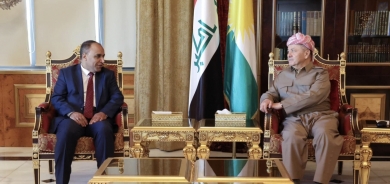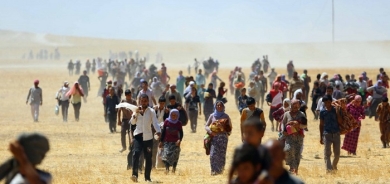UN Genocide Convention: It proves so difficult to recognize so many atrocity crimes as Genocide

The first two Articles under the Genocide Convention are viewed as the most significant articles since the members agreed on the charter of the convention at the outset.
Article I declares that “the Contracting Parties confirm that Genocide, whether committed in time of peace or in time of war, is a crime under international law which they undertake to prevent and to punish” (UNs’ Treaty Series 1951: 280). This article purports to extend the authority of international law to prosecute or extradite those who commit genocide, even if this crime is perpetrated in peacetime. However, from the legal point of view, during the rough drafting, a delegation at the UN assembly of some states, such as Denmark, Belgium, and the Netherlands, saw this article as useless. In contrast, India and some others had a different perspective (PART II: Interpretation of the Convention 2008: 12). In Article II, genocide is defined as “any of the following acts committed with intent to destroy, in whole or in part, a national, ethnical, racial or religious group, such as:
a) Killing members of the group;
b) Causing serious bodily or mental harm to members of the group;
c) Deliberately inflicting on the group conditions of life calculated to bring about its physical destruction in whole or in part;
d) Imposing measures intended to prevent births within the group;
e) Forcibly transferring children of the group to another group”, (UNs’ Treaty Series 1951: 280).
The thrust behind the convention addressed the treaty in such a way as to guarantee the liability of individuals, and it also aimed at ensuring such applicability for all states. However, there seem to be serious shortcomings in the process of implementing the convention. For instance, according to the treaty, it was assumed that the states would pass statutes on ‘genocide in their panel codes’. Nonetheless, the convention has been actively mandated in some states, but has been paid no attention in many others; this has enfeebled the convention. This is due to the crime of genocide being committed in a number of countries, such as Tibet, Indonesia, East Timor, Cambodia, Iraq, Rwanda, Sudan, East Pakistan (now Bangladesh) and Myanmar.
After the perpetration of all these crimes, does it mean the convention is incapable of responding to the blatant violence in the world? The rest of the paper attempts to respond to this question with reference to some weakness points in content of the Genocide Convention.
The weakness in content of convention – in particular – comes to view in article II. When it maintains that the crime of genocide demands a high level of verify regarding the mental element of “intent”. In this respect, a person who is committed to the crime of genocide is prosecuted under the convention when he/she intends to destroy a national, ethical, racial or religious group, either in its entirety, or in part.
Problematically, if specific intent is not found, then the acts of offender will not be regarded as genocide. Nevertheless, this act might be delineated as a crime against humanity. As Costi (2009: 844) states, “special intent does not simply mirror the actus reus”. For example, ethnic cleansing includes the rape of women and displacement in the context of genocide, as defined under article II. However, the actor who commits these crimes of ethnic cleansing will not be found guilty under the convention without ‘genocidal intent’.
The case of Jelisic is a good example; he was not found culpable of the crime of genocide. However, there were various pieces of evidence prove that Jelisic was responsible for ethnic cleansing and destroying part of a Bosnian Muslim group. The Trial Chamber, in this case, eventually declared that genocidal intent is purpose-based. The court also indicated that the definition of genocide requires a specific state of mind or certain intent with regard to the overall consequence of the banned crime (Kabasti 2005: 392).
Another main weakness of the Genocide Convention is that the delineation of the crime of genocide in the treaty is too narrow and unclear. In this respect, some cases resulted in situations that seem to constitute as crime of genocide, but they were not enumerated as genocide. Over the years, the lack of a clear definition has created difficulty in deciding whether the case should be regarded as genocide (Kabatsi 2005: 390).
There are a number of academics who agree that the definition is unclear and too narrow, and that there have been a large number of mass killings since 1948 that have not been labelled as genocide but that would definitely fall under it (BBC 2010). Jones (2006:13) enumerates the delineation of genocide in the convention as vague and in particular, they maintain that phrases in Article II of the Genocide Convention are ambiguous and controversial. Theriault (2010: 482) states that the definition of genocide is lacking in too many cases and this makes the definition unavailable for many groups to be protected by the convention. The Genocide Convention is regularly denounced for its lack of sanctions action against environment, and direct acts against people that persecute them or their cultural distinctiveness (BBC 2010).
For example, the causes of the extensive massacres, devastated environment and ruined culture in the south of great Kurdistan (Iraqi Kurdistan) during the 1980s, and Kurdish were not instantly apparent, but the reality that they were happening was obvious. This was a case of genocide beyond any reasonable doubt; however, the United Nations are still not ready to publicly announce it as such– and have only condemned it and acknowledged that almost 182,000 Kurdish people were exterminated in the north of Iraq (KRG 2011). In addition to that, as Kabatsi (2005: 391) mentions, it is difficult to manifest special intent beyond reasonable doubt, to judge and establish the number of exterminations that are equal to genocide. Therefore, it is very important to have a constructive delineation in order to predict and prohibit the crime of genocide before thousands die needlessly.
Another critical problem in the Convention of Genocide can be found with respect to the final subsection of Article II, which refers to ‘transferring children from the group to another group’. In this regard, this study provides the example of the policy of child removal in Australia during the twentieth centuries to point to another enfeebled and confused point in the Genocide Convention.
The Australian government introduced new policies to remove mixed-blood Aboriginal children from their families and integrate them into the white population. This process would explicitly be in contravention of the Genocide Convention (Short 2010: 46-7). This is because it might have genocidal consequences and operates against Aboriginal groups; in other terms, this policy partly led to the destruction of these groups. However, this process has not been recognized as evidence of genocide. This is because, up until now, sufficient evidence has not been found to prove that there was specific intent to perpetrate a crime of genocide against the Aborigines, as well as to dismember them as a distinct ethnic group (Short 2010: 51-2). The Australian government released numerous documentary testimonies, such as newspaper articles and reports to parliamentary committees to justify that this process was carried out with benevolent intent in order to raise the living standard of Aboriginal people to the standard level on a par with the rest of the population.
Another major weakness in the convention comes to light when it is recognised that the convention relies heavily on the protection of a limited number of groups, based on four qualities: national, ethnical, racial or religious group.
Quayle (2005: 369) states that the reasons behind selecting these groups were due to their inevitably stable nature and because religion, ethnical, race and national groups had been mainly oppressed during history. In this interpretation, Nersessian (2008: 260) raises the issue that crimes against individual is labelled genocide when individual is member of protected groups. If the individual who is victimized lack membership in these specific groups, then he/she does not qualify in the context of genocide.
Furthermore, the convention struggles at a fundamental level to make a distinction between permanent and impermanent groups. “One of the essential qualities of a distinctive people – their culture is excluded from the Convention’s protection. Cultural genocide is distinguished as being an attack on the ideas and not the physical existence of the group” (Quayle 2005: 368). The convention also ignores political groups; however, some political academics note that political groups are in concurrent existence as national groups. From this interpretation, this group is protected under the convention. However, Nersessian (2008: 261-2) criticizes this perception; he believes that ‘political affiliations’ are insufficient to build nationality in and of themselves, and, for this reason, the protected situation is irrelevant.
References:
BBC News (2010) ‘Analysis: Defining Genocide’, August 27, viewed May 7, 2014,
Costi, A (2009), 'The 60th Anniversary of the Genocide Convention', Victoria University Of Wellington Law Review, 4, Academic OneFile, EBSCOhost, viewed 7 May 2014.
Jones, A (2006) ‘Genocide: A Comprehensive Introduction’, London; Routledge.
Kabatsi, F (2005) ‘Defining or Diverting Genocide: Changing the Comportment of Genocide’, International Criminal Law Review, V. 5, No. 3, PP.387-400.
Kurdistan Regional Government/ UK Representation (2011), ‘What happened in the Kurdish Genocide’, viewed May 8, 2014, Available at
Nerssessian, D (2008) ‘The Contours of Genocidal Intent: Troubling Jurisprudence from the International Court Tribunal’, The Texas International Law, V.37, No.2, viewed May 4,2014,
PART II: Interpretation of the Convention, (2008), Case Western Reserve Journal Law, 40, 1/2, pp. 10-56, Business Source Complete, EBSCOhost, viewed April 27, 2014.
Quayle, P (2005) ‘Unimaginable Evil: the Legislative Limitations of the Genocide Convention’, International Criminal Law Review, V.5, No.2, PP.363-372.
Short, D (2010), ‘Australia: a continuing genocide?’, Journal Of Genocide Research, 12, 1/2, pp.45-68, SocINDEX with Full Text, EBSCOhost, viewed 7 May 2014.
Theriault, H. C (2010) ‘Genocidal Mutation and the Challenge of Definition’, Metaphilosophy, V.41, No.4, PP.26-68.
United Nation Treaty No. 1021(1951), ‘Convention on the Prevention and Punishment of the Crime of Genocide’, January 12, available at

 Dlsoz Hawrami
Dlsoz Hawrami






